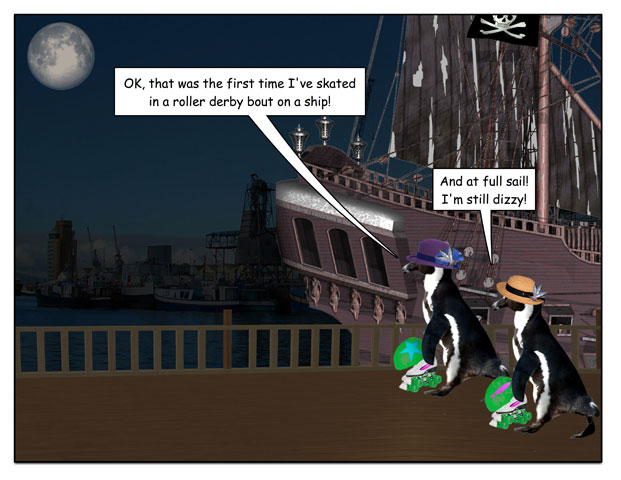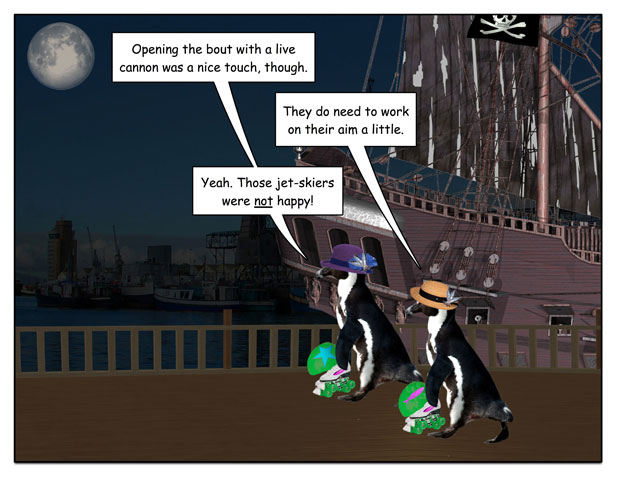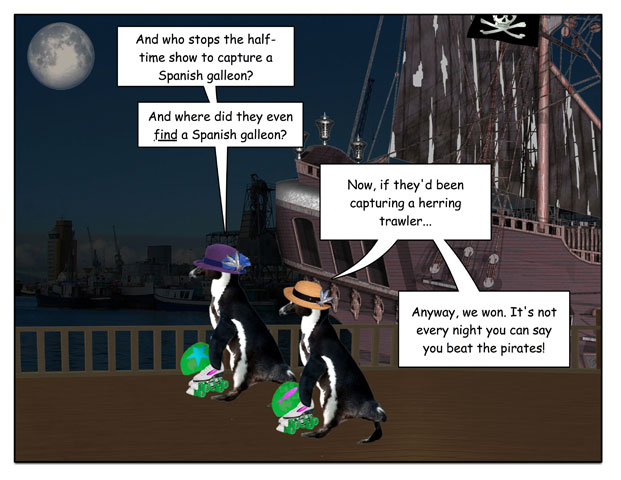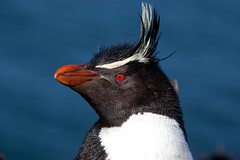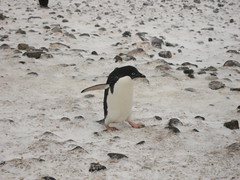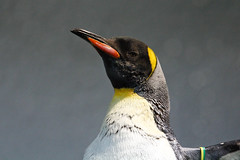
Georgetown —
She participated in the largest rescue on record of a single species of animal. Georgetown resident Dyan deNapoli, affectionately known as The Penguin Lady, will never forget the day she first entered a South African warehouse in 2000 to work as a rehabilitation manager with the first team of penguin experts trying to save 20,000 penguins after a major oil spill. The flightless birds were covered with oil when the ship MV Treasure sank near their breeding grounds.
“The smell hit me like a wall and made me gag,’” said de Napoli. “It was this putrid smell of oil, guano, sardines, human sweat, coal dust and food being cooked for volunteers. Before returning home I had to throw away my clothes, shoes and backpack, or there would have been a riot on the plane.”
Out of 20,000 oiled birds, 91 percent were successfully rehabilitated and returned to the wild, the largest number of a single species ever to be rescued and rehabilitated. The book deNapoli wrote on her experiences during the massive international rescue effort was released on Oct. 26.
“The Great Penguin Rescue,” published by Simon & Schuster, is now available at Barnes & Noble, Borders and other well-known bookstores, as well as locally.
“You can get it at the Book Rack and Jabberwocky in Newburyport,” said deNapoli.
DeNapoli will be appearing at 7 p.m. on Nov. 19 at the Jabberwocky Bookstore in Newburyport, at the Tannery, 50 Water St. She will also being appearing on “The Literati Scene,” on Public Access Cable Station 16, in a show that will also run on YouTube.
“I wrote this book to raise awareness and funding to help protect penguins,” said deNapoli. “I hope this book can inspire other people to contribute to penguin rescue groups. I am giving 20 percent of the proceeds from this book to penguin rescue groups and to the Gulf Oil Spill Relief and Restoration Fund. I’ve included an appendix of penguin rescue and conservation groups in the appendix of my book.”
The book is already getting rave reviews.
“The New York Post chose it as required reading,” said deNapoli.
Years of experience
DeNapoli worked with penguins for years before writing this book. In 1997, the New England Aquarium in Boston hired deNapoli as senior penguin aquarist, a post she would hold for nine years before quitting to help an ill relative. She still makes return visits to see her penguins, and they still remember her and call out to her.
Co-managing the aquarium’s colony of 69 rockhopper, African and little blue penguins and hand-raising dozens of penguin chicks, she became pretty fond of the little guys over the years.
“What surprised me was that they are very intelligent, all know their names and act more like cats. If they feel like doing something, they’ll do it,” said deNapoli. “Each bird has such a unique personality and temperament, it’s like an extended family. I kind of speak their language. Each species has a few different calls that mean different things, like contact calls and territorial display calls.”
The birds are very affectionate, and sometimes jump right into trainers’ laps.
“Hand-raised penguins are very interested in being around people,” said deNapoli.
Writing and other adventures
Her years of field experience with penguins also led to an invitation for her to write a new penguin entry for the New Book of Knowledge encyclopedia, the oldest encyclopedia in the United States, according to deNapoli.
“They wanted a completely new chapter on penguins since theirs had not been updated for 40 years,” said deNapoli. “I just wrote [it] from scratch, keeping it within the style of the rest of the encyclopedia. They said they were thrilled with it. It came out in 2008.”
During the winter of 2009, she served as the onboard penguin expert and guest lecturer on the ship Antarctic Dream.
“The PR person for Antarctic Shipping S.A. in Chile looked up penguin experts and found that the whole first page on the Internet was me,” said deNapoli. “After reading that, they called and asked me if I’d like to exchange my expertise for a free 11-day trip to Antarctica. I asked if my husband, Marc, could come with me, and they agreed. I accepted right away.”
DeNapoli is now recognized worldwide as a penguin expert, but she also gives educational presentations on the endangered birds at schools, libraries, science centers and senior care facilities.
You can learn more about deNapoli, her work and her book at thepenguinlady.com.
Penguins in peril
According to deNapoli, global warming is now threatening all 17 species of penguins on the planet, and at an alarming rate. Rising water temperatures are causing the fish, squid and krill that penguins depend on for food to move further away to find colder waters and currents, she explained. They often move out of the Antarctic and sub-Antarctic penguins’ hunting range, leading to starvation of adults and chicks, and sometimes stopping them from breeding altogether.
DeNapoli said that sea ice in Antarctica is steadily decreasing, removing the breeding grounds for the krill that the penguins eat and decreasing their food supply. Warming temperatures in Antarctica are also causing large sections of ice shelf to break free from the continent, one as large as Rhode Island and one seven times the size of Manhattan, according to deNapoli.
The Emporer penguins made famous in the film “March of the Penguins” are losing the ice shelves where they breed and raise their chicks 70 miles inland from the sea, deNapoli explained. She said that chicks whose waterproof feathers are not in place by the time the ice shelf melts back to where they are being raised are already drowning as a result.
You can learn more about penguins and global warming at allexperts.com in a section written by deNapoli.
Source
“The smell hit me like a wall and made me gag,’” said de Napoli. “It was this putrid smell of oil, guano, sardines, human sweat, coal dust and food being cooked for volunteers. Before returning home I had to throw away my clothes, shoes and backpack, or there would have been a riot on the plane.”
Out of 20,000 oiled birds, 91 percent were successfully rehabilitated and returned to the wild, the largest number of a single species ever to be rescued and rehabilitated. The book deNapoli wrote on her experiences during the massive international rescue effort was released on Oct. 26.
“The Great Penguin Rescue,” published by Simon & Schuster, is now available at Barnes & Noble, Borders and other well-known bookstores, as well as locally.
“You can get it at the Book Rack and Jabberwocky in Newburyport,” said deNapoli.
DeNapoli will be appearing at 7 p.m. on Nov. 19 at the Jabberwocky Bookstore in Newburyport, at the Tannery, 50 Water St. She will also being appearing on “The Literati Scene,” on Public Access Cable Station 16, in a show that will also run on YouTube.
“I wrote this book to raise awareness and funding to help protect penguins,” said deNapoli. “I hope this book can inspire other people to contribute to penguin rescue groups. I am giving 20 percent of the proceeds from this book to penguin rescue groups and to the Gulf Oil Spill Relief and Restoration Fund. I’ve included an appendix of penguin rescue and conservation groups in the appendix of my book.”
The book is already getting rave reviews.
“The New York Post chose it as required reading,” said deNapoli.
Years of experience
DeNapoli worked with penguins for years before writing this book. In 1997, the New England Aquarium in Boston hired deNapoli as senior penguin aquarist, a post she would hold for nine years before quitting to help an ill relative. She still makes return visits to see her penguins, and they still remember her and call out to her.
Co-managing the aquarium’s colony of 69 rockhopper, African and little blue penguins and hand-raising dozens of penguin chicks, she became pretty fond of the little guys over the years.
“What surprised me was that they are very intelligent, all know their names and act more like cats. If they feel like doing something, they’ll do it,” said deNapoli. “Each bird has such a unique personality and temperament, it’s like an extended family. I kind of speak their language. Each species has a few different calls that mean different things, like contact calls and territorial display calls.”
The birds are very affectionate, and sometimes jump right into trainers’ laps.
“Hand-raised penguins are very interested in being around people,” said deNapoli.
Writing and other adventures
Her years of field experience with penguins also led to an invitation for her to write a new penguin entry for the New Book of Knowledge encyclopedia, the oldest encyclopedia in the United States, according to deNapoli.
“They wanted a completely new chapter on penguins since theirs had not been updated for 40 years,” said deNapoli. “I just wrote [it] from scratch, keeping it within the style of the rest of the encyclopedia. They said they were thrilled with it. It came out in 2008.”
During the winter of 2009, she served as the onboard penguin expert and guest lecturer on the ship Antarctic Dream.
“The PR person for Antarctic Shipping S.A. in Chile looked up penguin experts and found that the whole first page on the Internet was me,” said deNapoli. “After reading that, they called and asked me if I’d like to exchange my expertise for a free 11-day trip to Antarctica. I asked if my husband, Marc, could come with me, and they agreed. I accepted right away.”
DeNapoli is now recognized worldwide as a penguin expert, but she also gives educational presentations on the endangered birds at schools, libraries, science centers and senior care facilities.
You can learn more about deNapoli, her work and her book at thepenguinlady.com.
Penguins in peril
According to deNapoli, global warming is now threatening all 17 species of penguins on the planet, and at an alarming rate. Rising water temperatures are causing the fish, squid and krill that penguins depend on for food to move further away to find colder waters and currents, she explained. They often move out of the Antarctic and sub-Antarctic penguins’ hunting range, leading to starvation of adults and chicks, and sometimes stopping them from breeding altogether.
DeNapoli said that sea ice in Antarctica is steadily decreasing, removing the breeding grounds for the krill that the penguins eat and decreasing their food supply. Warming temperatures in Antarctica are also causing large sections of ice shelf to break free from the continent, one as large as Rhode Island and one seven times the size of Manhattan, according to deNapoli.
The Emporer penguins made famous in the film “March of the Penguins” are losing the ice shelves where they breed and raise their chicks 70 miles inland from the sea, deNapoli explained. She said that chicks whose waterproof feathers are not in place by the time the ice shelf melts back to where they are being raised are already drowning as a result.
You can learn more about penguins and global warming at allexperts.com in a section written by deNapoli.
Source
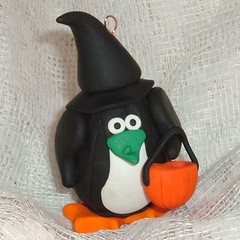

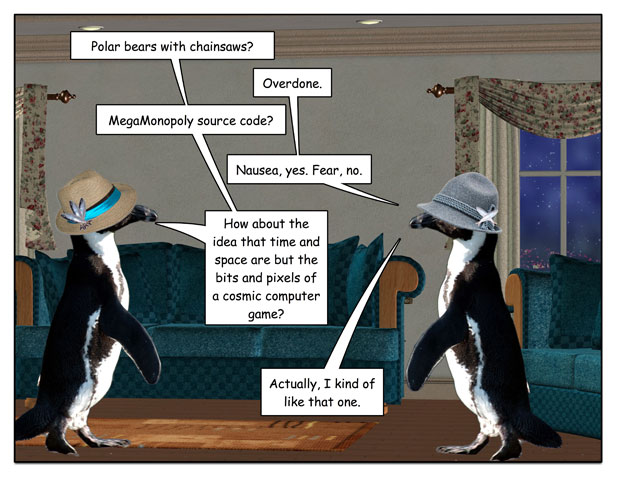
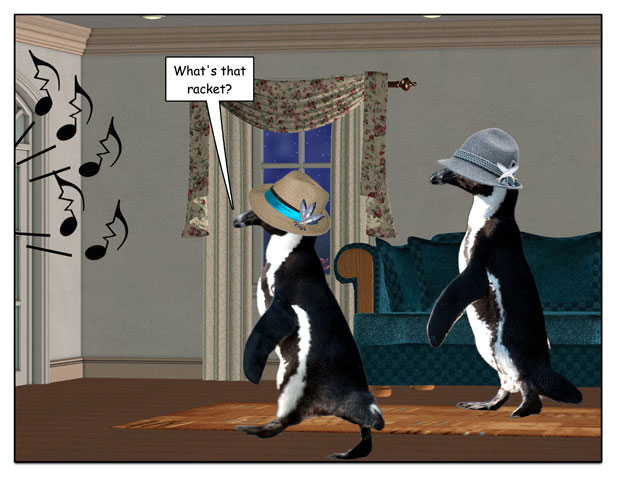
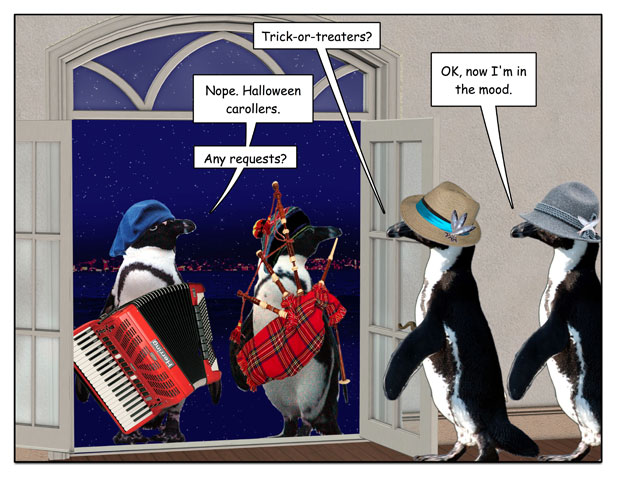










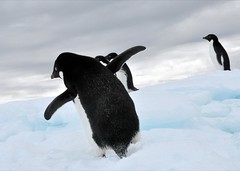
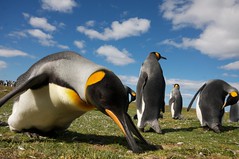


 By John Chapo
By John Chapo
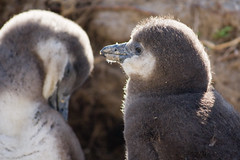

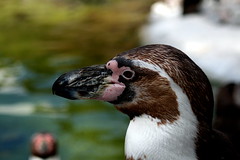

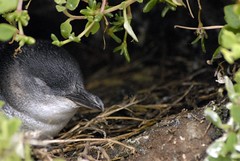
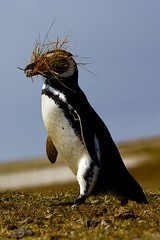


 By Bill LaMarche
By Bill LaMarche


